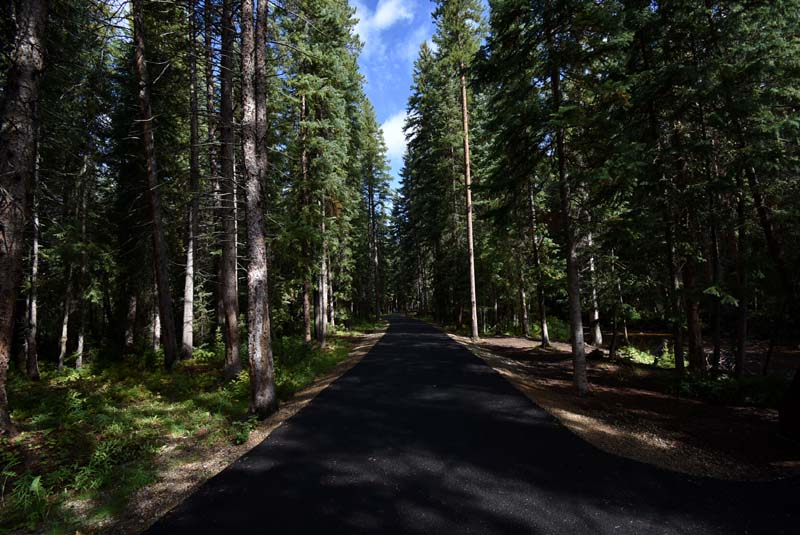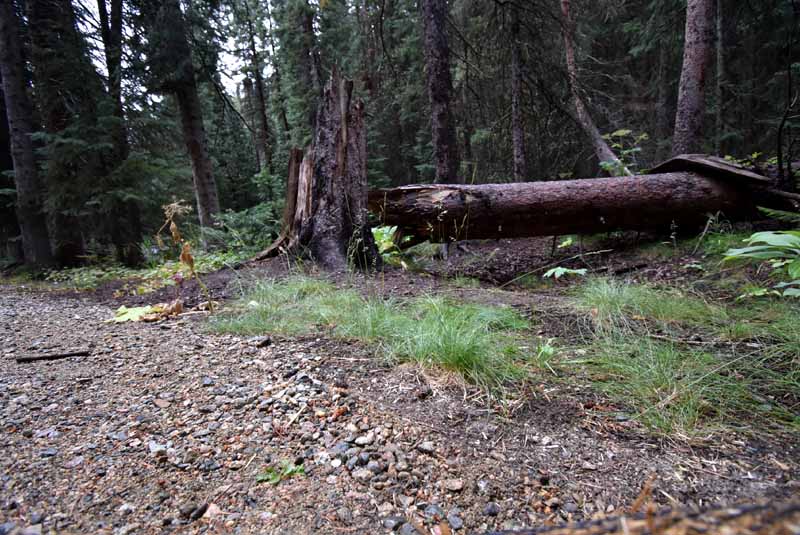
The Fraser River Trail that runs along the Fraser River and connects the town of Fraser, CO and Winter Park, CO passes through various habitats, from meadows to suburban paths, and even to dark quiet areas covered by tall conifers. It is a paved and easy trail that i would highly recommend to anyone interested in nature.
It was while enjoying a walk through a shadowed portion of the trail that run beneath the gaze of giant conifers that I thought about the place of grasses in this environment, one that is relatively inimical to them. There were of course occasional tufts and even clusters of grasses in the shadows, and especially along the more lighted riverside, but by and large the ground was almost clear of any members of the Poaceae.

In many ways, the shaded path that i walked might have been very similar to what the world was like tens of millions of years ago (minus the paved walkways of course!). There were no vast grasslands then, no fields of grain. For example, North America was covered with subtropical-tropical evergreen or semi-deciduous dicotyledonous forests during the Early-Middle Eocene. In this ancient world, the grasses huddled in small groups beneath the towering ancient trees that dominated the face of the earth. They were just another minor component in the understory of the forests, a group of plants that might have continued their sheltered lives until their last member passed into the shadows of evolutionary oblivion.

The Poaceae originated about 98 million years ago (mya), a long time before the end of the dinosaurs. For millions of years these ancient grasses lived their lives under the shade of forest trees, or at the margins of these forests. But sometime in the Paleocene epoch (66 to 56 mya), different species of grasses independently made the shift from the forest into open habitats, which were forming as the earth entered into a prolonged cooling period.
This shift in habitat was a major inflection point in the history of the Poaceae, but it did not mark the immediate dominance of grasses in the new open spaces. Instead, the evolution of grass-dominated habitats occurred at different times in different continents, with C3 grass-dominated ecosystems appearing in the early Miocene (around 25 mya) as these grasses pushed back the trees, and C4 grass-dominated habitats expanding in the subtropics and tropics between 7-5 mya. Thus, the progression seemed to involve the creation of open habitats, followed by the increasing domination of C3 grasses in these habitats, and finally the recent expansion of C4 grasses in subtropical and tropical regions of the world.
The factors that caused these major ecological shifts are still being intensely studied and debated even today. There were some thoughts that declining atmospheric CO 2 concentrations, in addition to decreasing temperatures and increased aridity and seasonality of precipitation, could have been the major factors in the rise of grasses. More recently, hypotheses have focused on the influence of local-scale factors such as fire and herbivores. Indeed, one recent study showed that fires accelerated the replacement of forests with open woodlands dominated by C3 grasses as the climate cooled and becoming increasingly drier 8 to 4 mya in eastern Eurasia, creating a new flammable ecosystem.
The origin of grasses and their rise to dominance continues to fascinate me, and as I finally walked away from the shadows of the forested part of Fraser River Trail and into the bright glorious sunshine, i could only wonder what the world today would have been like if those first few grasses had not also made their own dramatic jump into the light.

References
Feurdean, A., Vasiliev, I (2019). The contribution of fire to the late Miocene spread of grasslands in eastern Eurasia (Black Sea region). Sci Rep 9, 6750 . https://doi.org/10.1038/s41598-019-43094-w
Gallaher TJ, Dean C. Adams, Lakshmi Attigala, Sean V. Burke, Joseph M. Craine, Melvin R. Duvall, Phillip C. Klahs, Emma Sherratt, William P. Wysocki, Lynn G. Clark (2019) Leaf shape and size track habitat transitions across forest–grassland boundaries in the grass family (Poaceae), Evolution, Volume 73, Issue 5, 1 May 2019, Pages 927–946, https://doi.org/10.1111/evo.13722
Gallaher TJ, Paul M. Peterson, Robert J. Soreng, Fernando O. Zuloaga, De-Zhu Li, Lynn G. Clark, Christopher D. Tyrrell, Cassiano A.D. Welker, Elizabeth A. Kellogg, and Jordan K. Teisher (2022). Grasses through space and time: An overview of the biogeographical and macroevolutionary history of Poaceae[J]. J Syst Evol, 2022, 60(3): 522-569.
Strömberg, C. A. E. (2011). Evolution of Grasses and Grassland Ecosystems, Annual Review of Earth and Planetary Sciences, vol. 39, pp. 517–544, 2011. doi:10.1146/annurev-earth-040809-152402

Leave a Reply